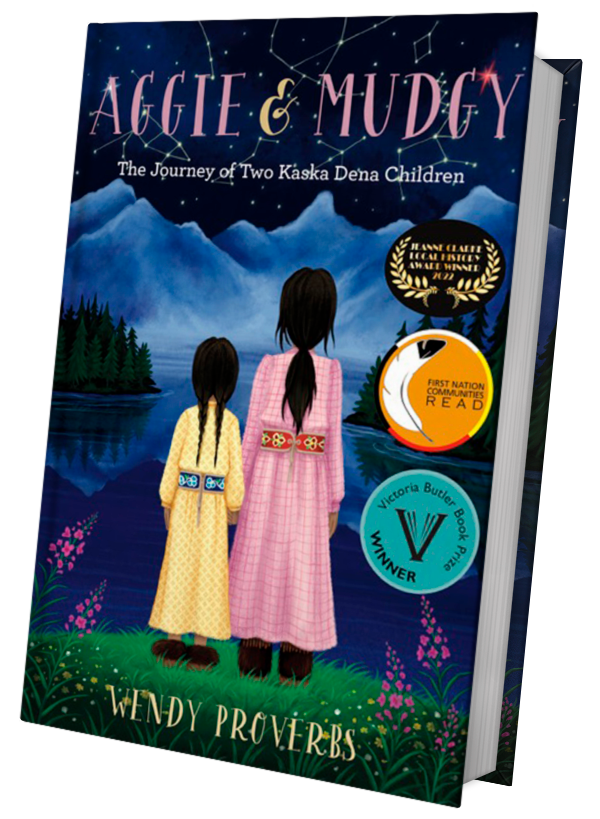This is a story of two young Kaska Dena girls’ journey from their homeland, on the B.C. – Yukon border, to the steps of Lejac Residential School in the late 1920’s. It is based on my aunt’s memoir depicting the journey she took with my birth mother. The story unfolds in contemporary times told by a fictionalized grandmother—Nan—to her eight-year-old granddaughter, Maddy. In keeping with the oral tradition of her ancestors, Nan teaches her granddaughter about her past by way of story.
As Maddy listens to Nan tell her about the girls’ journey, she learns how it changed their lives forever, and her young mind asks questions that any young child might ask. For example, Maddy wonders why they had to change their Kaska names to anglicized names, providing Nan an opportunity to teach her granddaughter about this dark aspect of her ancestors’ past. It offers a glimpse into the impacts of colonization at a level Maddy can begin to understand. It also provides a lovely example of how the sisters fashioned their anglicized names into ones that they could own and like. Christened by the church as Agnes and Martha, the girls rename themselves Aggie and Mudgy.
The story Nan tells Maddy is not, however, about what Aggie and Mudgy experienced at residential school. It focuses instead on the expedition that took them from their home in Daylu (Lower Post), near the B.C. – Yukon border, to Lejac Residential School on the shores of Fraser Lake in central B.C. The girls, aged eight and six, travel approximately 1,600 kilometers by riverboat, truck, paddlewheeler, steamship and train – an exceptionally long journey even by today’s standards, let alone for two young girls who had never been outside their remote village.
A priest wearing a long black robe accompanies them, an unkind man who physically abuses them when they don’t do as they’re told. At one point, they try to escape but are unsuccessful. The story of the journey ends just as the huge residential school doors bang shut behind the girls.
This is a story of fragmented and fractured families, and how they are resilient in facing their painful past, yet, despite their traumatic histories, there lies hope and reclamation. There is sadness in this story; however, there is also humour, love, and the power of family bonds.
